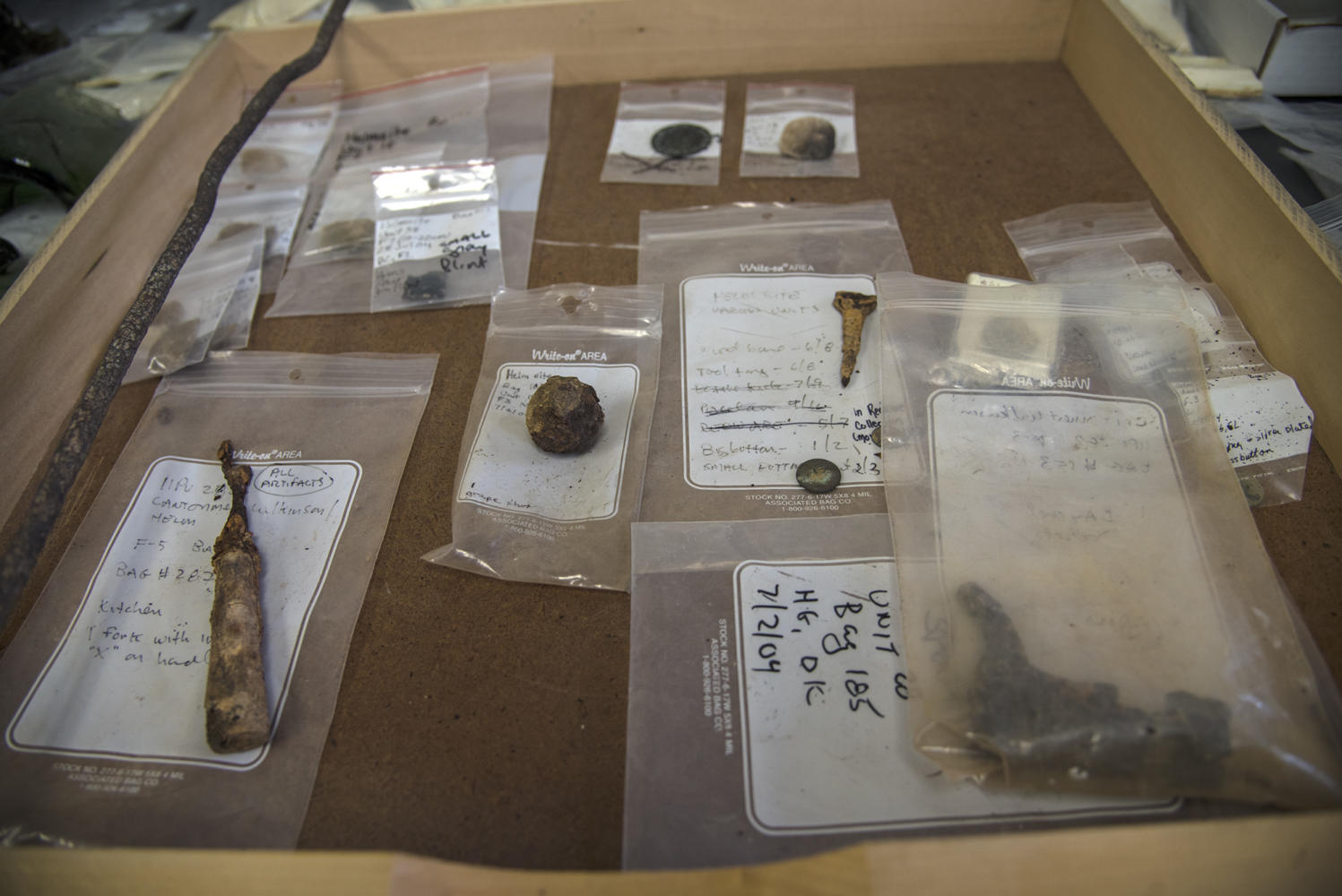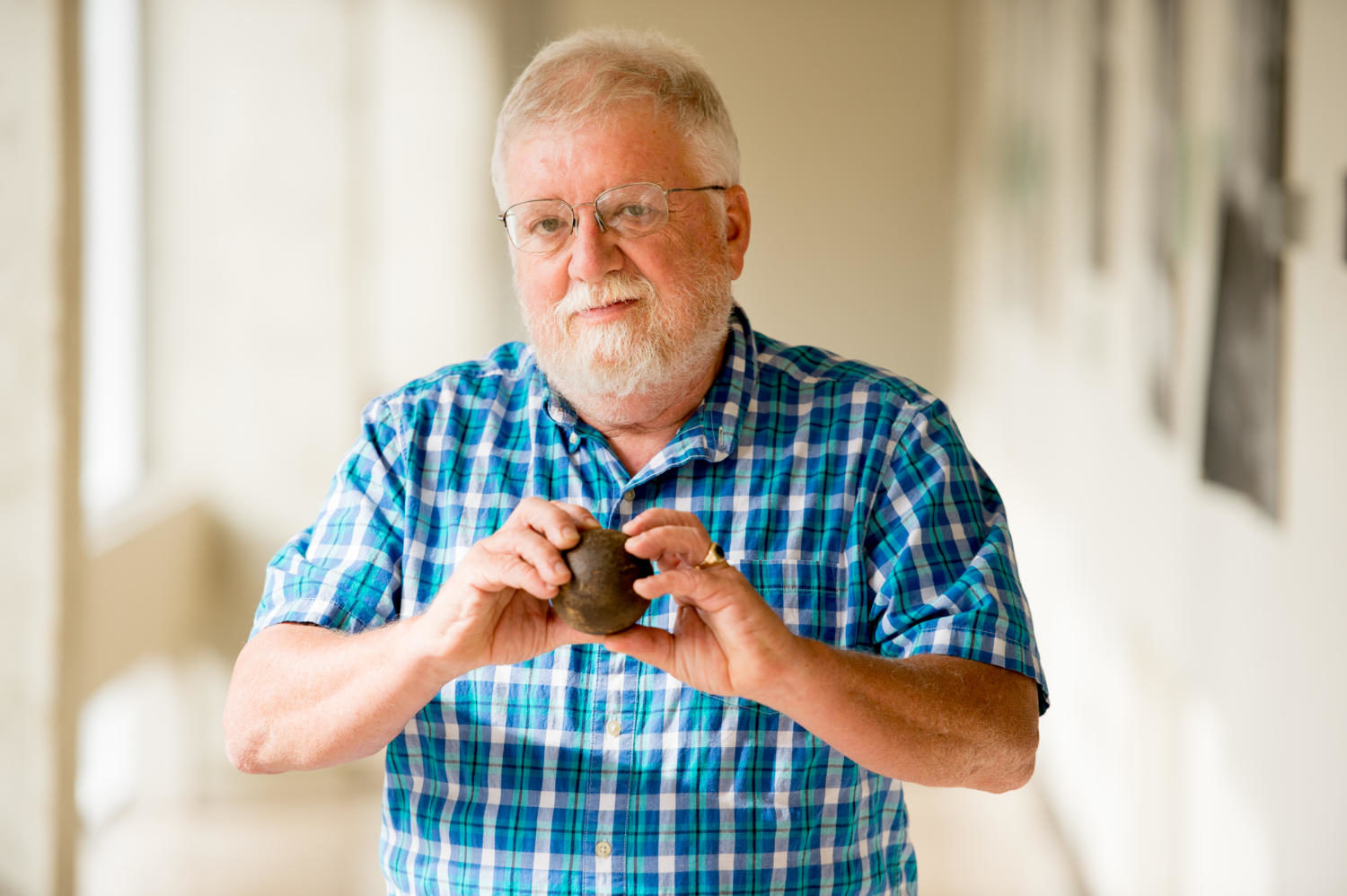‘Archaeologists aren’t born — they’re made’: Meet Mark Wagner, anthropology professor
Professor of Anthropology Mike Wagner holds a French canonball Monday, Sept. 11, 2017, outside of his office in Faner Hall. (Brian Muñoz | @BrianMMunoz)
September 13, 2017
Mark Wagner’s teaching philosophy is anyone can become an archaeologist with the proper resources, determination and on-the-job experience.
“Archaeologists aren’t born — they’re made,” said Wagner, an anthropology professor and the director of the Center for Archaeological Investigations.
Born in northern Kentucky, Wagner’s love for archaeology came from a book he found as a child about prehistoric rock art in Europe.
Advertisement
“I got so excited and I told my parents, ‘This is what I want to do,’” Wagner said. “That started it all.”
Wagner received his master’s degree in anthropology at the University of Tennessee Knoxville in 1978. It was there that he met his wife, Mary McCorvie, who is now an archaeologist for the National Forest Service.
McCorvie is originally from Illinois, and when the two met in the 1970s, Wagner said southern Illinois was an up-and-coming excavation site for archaeologists.
The pair moved to the region in the late ‘70s when Wagner began work on the Carrier Mills project through the Center for Archaeological Investigations. Through this, Wagner and the other archaeologists on site identified substantial human habitation sites from about 5,000 years ago in the Saline Valley.
After this project was completed in 1979, he worked for the Illinois Department of Conservation for a few years before a stint in the private sector until 1997, when he returned to SIU as a professor.

Wagner said the field of archaeology appeals to him because he is able to connect descendants to their ancestors’ historical homes.
Through the yearly summer field school Wagner runs for anthropology students, he said has been able to connect members of Native American tribes to sites on the Trail of Tears.
Advertisement*
This past summer, Wagner and the students in the field school were able to team up with the National Forest Service to excavate an area of the Shawnee National Forest that was involved in the Underground Railroad.
The site, which is near Eddyville, is a deserted community called Miller Grove. During the pre-Civil War era, Wagner said a man from Tennessee brought his slaves over the border to southern Illinois to free them.
They landed in Miller Grove and built a community of farmsteads with a church and cemetery, Wagner said.
The National Forest Service had done archaeological work there in 1999, Wagner said, and reached out to descendants of the community members. Wagner said as excavators became busy with other projects, the Miller Grove project eventually stopped.
“We’re reviving it,” Wagner said.
He said this gives students a chance to conduct “applied research,” that is, real experience working on excavation sites and networking with federal agencies and private companies.
The deserted town is a “silenced community,” which Wagner said means historical accounts do not mention Miller Grove.
This makes it much more difficult to study, Wagner said, as it becomes harder and harder to piece together its residents’ daily lives.
Though difficult, Wagner said archaeology is an important field because it tells the story of African Americans, Native Americans and other marginalized factions throughout history as historical texts often leave them out or don’t give the full picture.
“Archaeology becomes an independent line of evidence,” Wagner said.
Staff writer Amelia Blakely can be reached at ablakely@dailyegyptian.com or on Twitter @AmeilaBlakely.
To stay up to date with all your southern Illinois news, follow the Daily Egyptian on Facebook and Twitter.
Advertisement









